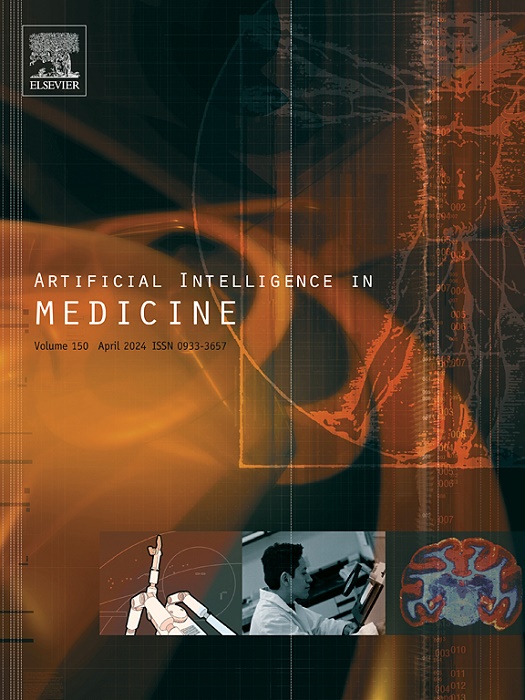一种用于循环肿瘤细胞自动检测的细胞相互作用和多重校正方法
IF 6.2
2区 医学
Q1 COMPUTER SCIENCE, ARTIFICIAL INTELLIGENCE
引用次数: 0
摘要
外周血循环肿瘤细胞(CTCs)的灵敏检测可作为癌症早期诊断和预后的有效工具。近年来,人们提出了许多基于现代目标检测器的方法来自动检测幻灯片图像中的异常细胞。虽然这些方法的模式也可以应用于ctc检测,但一些实际困难导致它们的性能不理想,例如在大量混合细胞中准确捕获ctc,以及具有相似视觉特征的ctc和ctc样细胞的识别。在这里,我们开发了一种新的细胞相互作用和多重校正检测器CMD,并首次应用H&; e染色的幻灯片图像自动检测ctc。具体而言,该方法结合了两个面向任务的新模块:(1)自关注模块,用于聚合细胞之间的特征交互,使模型更加关注关键的异常细胞;(2)硬样本挖掘采样器,用于逐步校正具有模糊分类边界的细胞的预测。在1247张带注释的幻灯片图像的多中心数据集上进行的实验证实了我们的方法优于最先进的细胞检测方法。烧蚀实验部分的结果也证明了两个模块的有效性。本文的源代码可在https://github.com/zx333445/CMD上获得。本文章由计算机程序翻译,如有差异,请以英文原文为准。
A cell-interacting and multi-correcting method for automatic circulating tumor cells detection
Sensitive detection of circulating tumor cells (CTCs) from peripheral blood can serve as an effective tool in the early diagnosis and prognosis of cancer. Many methods based on modern object detectors were proposed in recent years for automatic abnormal cells detection in slide images. Although the modes of these methods can also be applied to the CTCs detection, several practical difficulties lead to suboptimal performance of them, such as accurate capture of CTCs in a large number of mixed cells and identification of CTCs and CTC-like cells with similar visual characteristics. Here, we develop a new cell-interacting and multi-correcting detector called CMD, and apply H&E-stained slide images to detect CTCs automatically for the first time. Specifically, the proposed method incorporates two task-oriented novel modules: (1) a self-attention module for aggregating feature interactions between cells and allowing the model to pay more attention to key abnormal cells, (2) a hard sample mining sampler for progressively correcting predictions of cells with ambiguous classification boundaries. Experiments conducted on a multi-center dataset of 1247 annotated slide images confirm the superiority of our method over state-of-the-art cell detection methods. The results of ablation experiment part also prove the effectiveness of two modules. The source codes of this paper are available at https://github.com/zx333445/CMD.
求助全文
通过发布文献求助,成功后即可免费获取论文全文。
去求助
来源期刊

Artificial Intelligence in Medicine
工程技术-工程:生物医学
CiteScore
15.00
自引率
2.70%
发文量
143
审稿时长
6.3 months
期刊介绍:
Artificial Intelligence in Medicine publishes original articles from a wide variety of interdisciplinary perspectives concerning the theory and practice of artificial intelligence (AI) in medicine, medically-oriented human biology, and health care.
Artificial intelligence in medicine may be characterized as the scientific discipline pertaining to research studies, projects, and applications that aim at supporting decision-based medical tasks through knowledge- and/or data-intensive computer-based solutions that ultimately support and improve the performance of a human care provider.
 求助内容:
求助内容: 应助结果提醒方式:
应助结果提醒方式:


